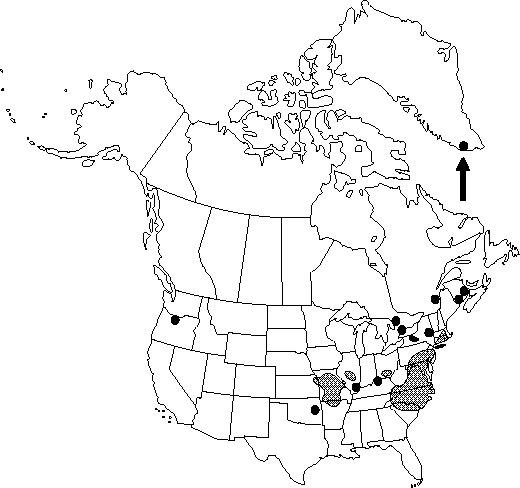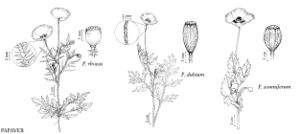Papaver dubium
Sp. Pl. 2: 1196. 1753.
Plants to 7 dm, hirsute to hispid. Stems simple or branching. Leaves to 20 cm. Inflorescences: peduncle proximally spreading-hispid, distally appressed-hispid. Flowers: petals orange to red, rarely with dark basal spot, to 3 cm; anthers violet; stigmas 7-9, disc ± flat. Capsules sessile or substipitate, narrowly obovoid, usually distinctly ribbed, to 2 cm, 2 times or more longer than broad.
Phenology: Flowering spring–summer.
Habitat: Fields, glades, dunes, stream banks, marshy areas, railroads, roadsides, and other disturbed sites
Elevation: 0-900 m
Distribution

Introduced; Greenland, N.B., Ont., Que., Ark., Conn., Del., D.C., Ill., Kans., Md., Mass., Mo., N.J., N.Y., N.C., Ohio, Okla., Oreg., Pa., R.I., S.C., Va., W.Va., Europe, sw Asia.
Discussion
In its native range, Papaver dubium is a tetraploid complex of five subspecies whose morphologies and distributions intersect to a considerable degree (J. W. Kadereit 1989, 1990). Probably several, if not all, of these entities have been introduced in North America, but it is fruitless to try to distinguish them here, where the species has arrived as a crop weed and the subspecies have no geographic integrity.
Papaver dubium sometimes seems to intergrade with P. rhoeas, at least in North America. The most readily evident character for distinguishing them reliably is the nature of the distal pubescence on the peduncles–whether spreading or appressed.
Selected References
None.
